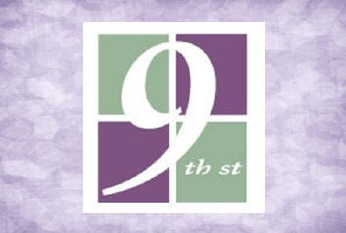Massage Therapy
Practitioners:
Dr Brady Spielbauer (920) 412-6871
Pat Dinger (920) 562-0621
Sandy Brunner (920) 639-1357
Diane Ellerman (920) 905-5455
Taylor Harris (920) 634-8317
Samantha Brown-Nooyen (920) 242-9799
Massage is good medicine.
Massage Therapy is a “hands-on” treatment in which a therapist manipulates muscles and other soft tissues of the body to improve health and well-being. Varieties of massage range from gentle stroking and kneading of muscles and other soft tissues to deeper manual techniques. Massage has been practiced as a healing therapy for centuries in nearly every culture around the world. It helps relieve muscle tension, reduce stress, and evoke feelings of calmness. Although massage affects the body as a whole, it particularly influences the activity of the musculoskeletal, circulatory, lymphatic, and nervous systems.
There are nearly 100 different massage and body work techniques. Each technique is uniquely designed to achieve a specific goal. The most common types practiced in the United States include:
Aromatherapy massage: Essential oils from plants are massaged into the skin to enhance the healing and relaxing effects of massage. Essential oils are believed to have a powerful effect on mood by stimulating two structures deep in the brain known to store emotions and memory.
Bamboo Fusion(R): Bamboo Fushion(R) integrates the use of heat (or cold) and bamboo tools in varying shapes and sizes to apply massage. It can be used as a Swedish style treatment or for deep tissue massage. It consists of kneading, compression, rolling, Trigger Point Therapy, and effleurage.
Craniosacral massage: Gentle pressure is applied to the head and spine to correct imbalances and restore the flow of cerebrospinal fluid in these areas.
Lymphatic massage: Light, rhythmic strokes are used to improve the flow of lymph (colorless fluid that helps fight infection and disease) throughout the body. One of the most popular forms of lymphatic massage, Manual Lymphatic Drainage (MLD), focuses on draining excess lymph. MLD is commonly used after surgery (such as a mastectomy for breast cancer) to reduce swelling.
Myofascial release: Gentle pressure and body positioning are used to relax and stretch the muscles, fascia (connective tissue), and related structures. Trained physical therapists and massage therapists use this technique.
On-site/chair massage: On-site massage therapists use a portable chair to deliver brief, upper body massages to fully-clothed people in offices and other public places.
Sports massage: Often used on professional athletes and other active individuals, sports massage can enhance performance and prevent and treat sports-related injuries.
Swedish massage: A variety of strokes and pressure techniques are used to enhance the flow of blood to the heart, remove waste products from the tissues, stretch ligaments and tendons, and ease physical and emotional tension.
Therapeutic Massage: Massage technique with the goal of relaxation and resolving underlying issues.
Trigger-Point Massage: Pressure is applied to “trigger points” (tender areas where the muscles have been damaged) to alleviate muscle spasms and pain.
Integrative touch: A gentle form of massage therapy that uses gentle, non-circulatory techniques. It is designed to meet the needs of patients who are hospitalized or in hospice care. A gentle form of massage therapy that uses gentle, non-circulatory techniques. It is designed to meet the needs of patients who are hospitalized or in hospice care.
Compassionate touch: Combines one-on-one focused attention, intentional touch, and sensitive massage with communication to enhance the quality of life for elderly, ill, or dying patients. Combines one-on-one focused attention, intentional touch, and sensitive massage with communication to enhance the quality of life for elderly, ill, or dying patients.
25 REASONS TO GET A MASSAGE
1. Relieve stress
2. Relieve postoperative pain
3. Reduce anxiety
4. Manage low-back pain
5. Help fibromyalgia pain
6. Reduce muscle tension
7. Enhance exercise performance
8. Relieve tension headaches
9. Sleep better
10. Ease symptoms of depression
11. Improve cardiovascular health
12. Reduce pain of osteoarthritis
13. Decrease stress in cancer patients
14. Improve balance in older adults
15. Decrease rheumatoid arthritis pain
16. Temper effects of dementia
17. Promote relaxation
18. Lower blood pressure
19. Decrease symptoms of Carpal Tunnel Syndrome
20. Help chronic neck pain
21. Lower joint replacement pain
22. Increase range of motion
23. Decrease migraine frequency
24. Improve quality of life in hospice care
25. Reduce chemotherapy-related nausea






